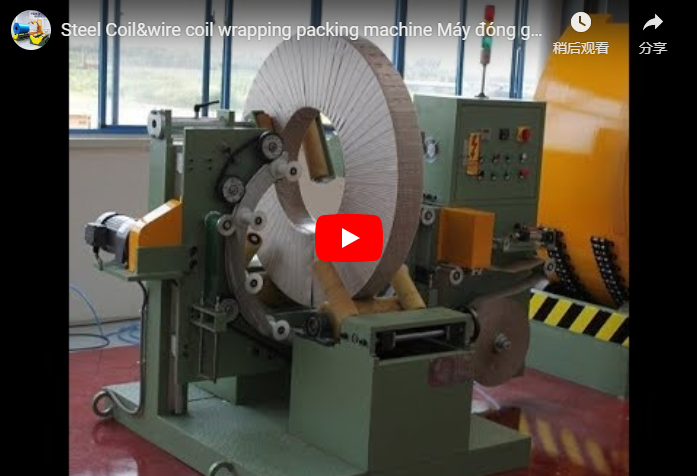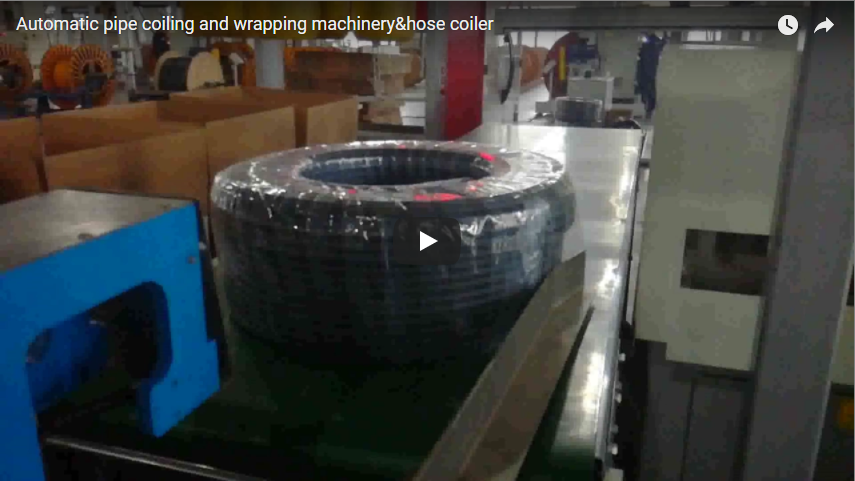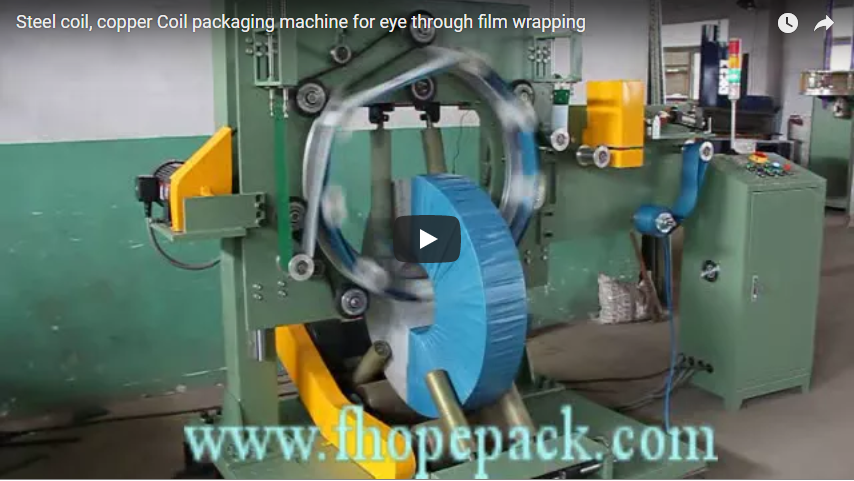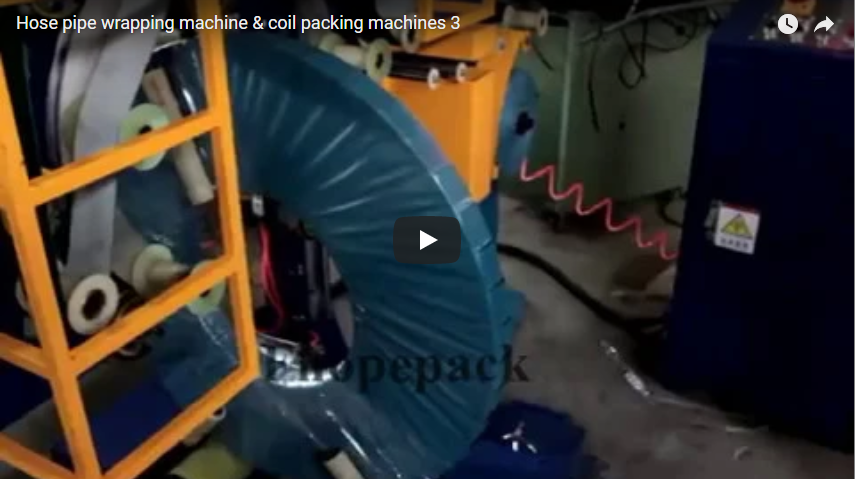Mastering Steel Wire Handling: A Technical Look at Automatic Coiling and Strapping Systems
Handling steel wire efficiently and safely is a critical aspect of many manufacturing and fabrication processes. Manual coiling and strapping are labor-intensive, time-consuming, and can lead to inconsistencies in package quality and safety hazards. Automating this process with integrated coiling and strapping systems offers significant advantages in productivity, consistency, and operational safety. This article delves into the technical aspects and practical benefits of automatic steel wire coiler and strapping machines.
The following video demonstrates a typical automatic steel wire coiling and strapping system in operation:
Let's break down the key components and considerations for these systems.
1. The Mechanics of Automatic Steel Wire Coiling
The core function of the automatic coiler is to wind steel wire into neat, consistently sized coils suitable for handling, storage, and downstream processes.
- Winding Mechanism: Typically, these machines use a rotating arm or a traversing guide system that moves relative to the coil build-up. This ensures precise layering and prevents tangling. Drive systems often employ servo motors for accurate speed and tension control.
- Tension Control: Maintaining consistent wire tension during winding is crucial to prevent loose coils or excessive stress on the wire. Modern systems use active tension control mechanisms, often adjustable via a Human-Machine Interface (HMI).
- Coil Handling: The machine forms the coil on a collapsible mandrel or coiler head. Once the target length or weight is reached, the wire is automatically cut. The completed coil is then ejected or transferred to the next station (often the strapping machine).
- Control System: A Programmable Logic Controller (PLC) typically manages the operation, synchronizing the winding speed, cutting sequence, and transfer mechanism. An HMI (often a touch screen) allows operators to set parameters, monitor the process, and troubleshoot issues.
Key Technical Parameters for Coilers:
- Wire Diameter Range: Specify the minimum and maximum wire diameters the machine can handle (e.g., 1.0 mm - 6.0 mm).
- Coil Inner Diameter (ID): The diameter of the coiler head/mandrel (e.g., 300 mm - 700 mm).
- Coil Outer Diameter (OD): The maximum finished coil diameter (e.g., 500 mm - 1200 mm).
- Coil Weight Capacity: The maximum weight of the finished coil (e.g., 50 kg - 1000 kg).
- Winding Speed: The rate at which wire is coiled, often adjustable (e.g., up to 150 meters/minute).
- Traversing Pitch: Adjustable parameter for controlling the wire layering.

2. Integrated Automatic Strapping Functionality
Once coiled, securing the wire bundle is essential for stability during handling and transport. The integrated strapping machine automates this step.
- Strap Delivery and Tensioning: The strapper feeds plastic strap (typically PET or PP) around the coil, tensions it to a preset level, and then seals it.
- Sealing Methods: Common sealing techniques include heat sealing or friction welding, both providing strong and reliable closures.
- Strapping Positions: Systems can apply multiple straps at programmed intervals around the coil circumference. Depending on the design, strapping can occur while the coil is stationary or indexed through a strapping C-frame or arch. Some systems offer both radial (around the circumference) and axial (through the eye) strapping capabilities.
- Strap Detection: Sensors are often included to detect successful strap application, tension, and sealing, alerting operators to potential issues like missed straps or insufficient tension.
Key Technical Parameters for Strapping Systems:
- Strap Type: PET (Polyester) or PP (Polypropylene).
- Strap Width Range: Common sizes the machine can handle (e.g., 9 mm, 12 mm, 16 mm).
- Strap Tension Range: Adjustable tension force applied (e.g., 200 N - 2500 N).
- Number of Straps: Programmable number of straps per coil (e.g., 2, 3, 4, or more).
- Cycle Time: The time required to apply one strap.
3. Operational Advantages and Practical Considerations
Implementing an automatic coiling and strapping system brings numerous operational benefits beyond simple speed increases:
- Enhanced Productivity: Continuous operation significantly increases throughput compared to manual methods.
- Improved Package Quality: Consistent winding tension and precise strap placement lead to stable, uniform coils every time.
- Increased Safety: Reduces manual handling of heavy wire coils and eliminates repetitive motions associated with manual strapping, lowering injury risks.
- Labor Optimization: Frees up personnel previously dedicated to manual coiling/strapping for other value-added tasks.
- Material Savings: Optimized strap tensioning and placement can potentially reduce strap consumption compared to less controlled manual methods.
Important Considerations:
- Integration: How will the system integrate with upstream wire drawing or processing lines and downstream storage or shipping systems? Consider buffer zones and conveyor interfaces.
- Wire Characteristics: Different wire types (e.g., high carbon, low carbon, annealed, galvanized) and tempers can behave differently during coiling. Ensure the machine can handle your specific product range.
- Maintenance: Like any automated equipment, regular preventive maintenance is crucial for reliability. Consider ease of access for maintenance tasks and availability of spare parts.
- Operator Training: While automated, operators still need training to set parameters correctly, monitor operation, load consumables (strap), and perform basic troubleshooting.
- Flexibility: Assess the system's ability to handle different coil sizes, wire diameters, and strapping requirements if your production involves varied specifications.
4. Selecting the Right System
Choosing the appropriate automatic coiling and strapping system requires careful evaluation of your specific needs:
- Throughput Requirements: Match the machine's cycle time and speed to your production volume.
- Product Specifications: Ensure the machine's parameter ranges (wire diameter, coil dimensions, weight) cover your entire product portfolio.
- Footprint and Layout: Consider the physical space required for the machine and its integration into your existing facility layout.
- Level of Automation: Determine the desired level of automation, including coil loading/unloading and data logging features.
- Vendor Support: Evaluate the manufacturer's reputation, technical support, training offerings, and parts availability.
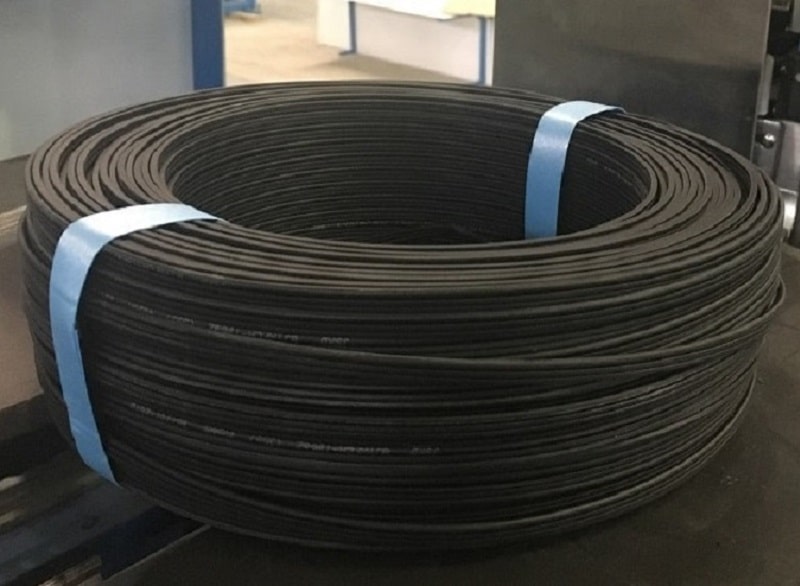
Conclusion
Automatic steel wire coiling and strapping machines represent a significant technological advancement for manufacturers and fabricators dealing with steel wire products. By automating these critical processes, businesses can achieve substantial improvements in efficiency, consistency, safety, and overall operational performance. Understanding the technical capabilities, operational benefits, and practical considerations discussed here is key to selecting and implementing a system that delivers tangible results. Solutions from manufacturers, such as the system demonstrated by FHOPE in the video, provide a pathway to streamlined wire handling and packaging. Investing wisely in this technology can lead to reduced labor costs and higher quality, more securely packaged steel wire products.

